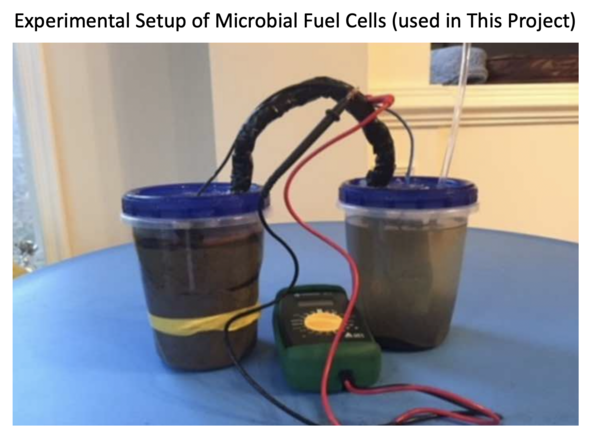From Waste to Wealth: Making Millivolts from Microbes!
(1) Charles J. Colgan High School, Manassas, Virginia, (2) Louise A. Benton Middle School, Manassas, Virginia
https://doi.org/10.59720/20-136
Biofuels can reduce our reliance on fossil energy sources while also protecting our environment. A Microbial Fuel Cell (MFC) is a system in which microorganisms produce electricity while performing their normal metabolism. The purpose of this project was to engineer a series of MFCs and manipulate circuit components to optimize voltage production. Each two-chamber MFC was created using creek mud, presumably rich in anaerobic exoelectrogenic bacteria, in the anode chamber and water in the cathode chamber. Four types of MFCs (three in each group) were constructed: 1) Mud in anode and water in cathode chambers; 2) Mud and sucrose in anode and water in cathode chambers; 3) Mud in anode and water and iron filings in cathode chambers; 4) Mud and sucrose in anode and water and iron filings in cathode chambers. Voltage output was recoded over twelve days. MFCs with iron filings (alone or with sucrose) consistently produced more voltage than the MFC with mud alone. Adding iron filings to the cathode chamber increased voltage output by 49%. While sugar alone in the anode chamber did not increase voltage output, the combination of sugar in the anode and iron filings in the cathode chambers did increase voltage output by 69% when compared to the MFC with mud alone. Our experiment demonstrated that MCFs can be optimized by manipulating bacterial substrate and using metal electron acceptors. We must invest in our planet’s future by supporting large scale research on MFCs that can produce clean electric energy and purify environmental waste.
This article has been tagged with: